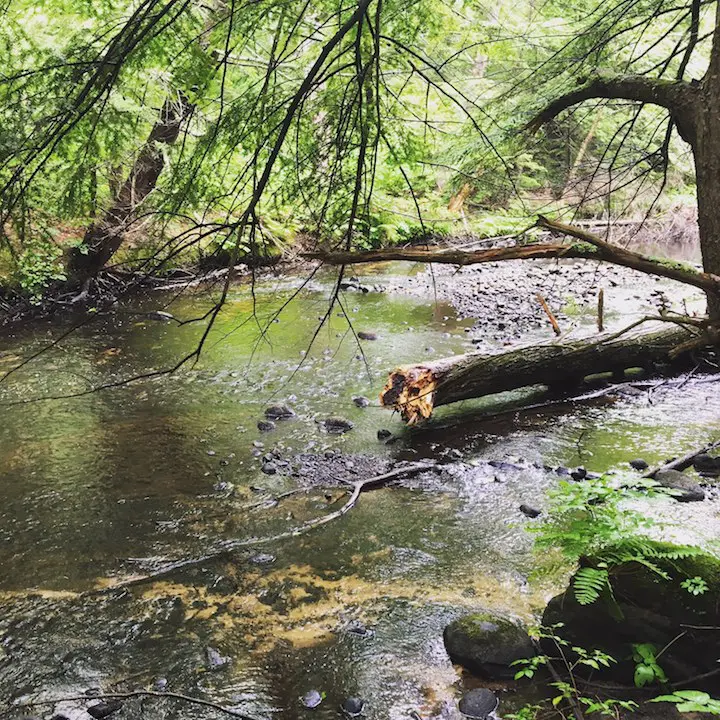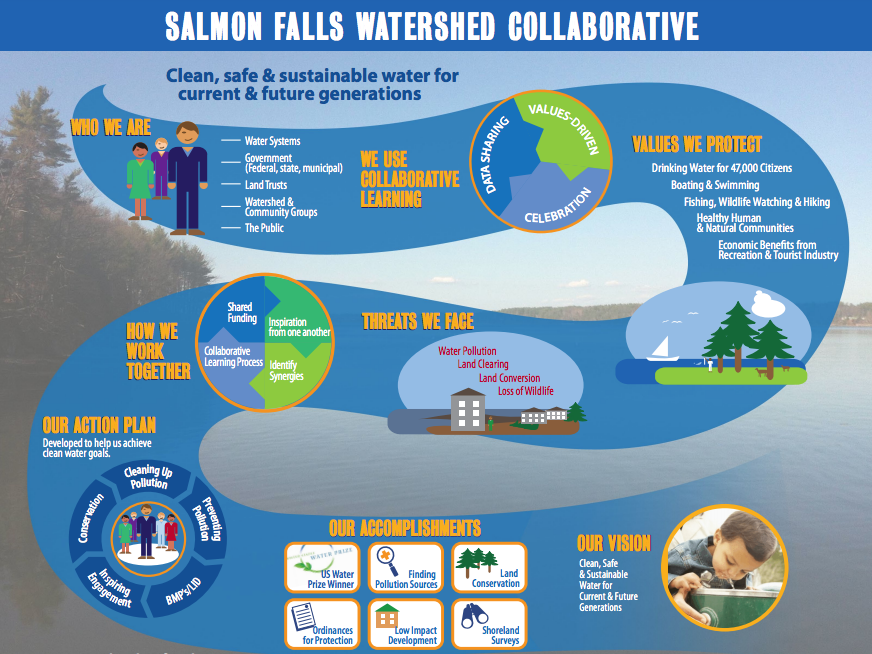Salmon Falls Watershed Collaborative
The Piscataqua Region Estuaries Partnership convened the Salmon Falls Watershed Collaborative in 2009 to improve watershed planning and management - and to protect water supply sources - in the Salmon Falls River watershed.
to protect drinking water
The Salmon Falls River flows from an ecologically diverse land area shared by the state of Maine and New Hampshire, and drains into the Great Bay Estuary, a coastal ecosystem of national importance. Following a stakeholder workshop in October 2010, the collaborative developed an Action Plan that reflected the priorities and ideas to complement existing water protection work being done by water districts, municipalities, and many organizations across the watershed.


While the watershed is a critical drinking water source (and estimated 28,000 residents rely on public water systems for clean drinking water) it is also threatened by increasing polluted runoff resulting from population growth and the associated conversion of forested land to developed areas. The U.S. Forest Service 2009 report "Private Forest, Public Benefits" identified the rivers in the Piscataqua Region as the most threatened in the nation with regard to potential decline in water quality due to conversion of private forested lands to housing.
The collaborative coordinates long-term source water protection efforts among planning commissions, land trusts, watershed associations, water systems, and town, state, and federal agencies in New Hampshire and Maine.
The collaborative's goal is to protect and sustain high quality drinking water in the Salmon Falls River watershed.
Additional Project Information & Resources
Additional Information & Resources
Action Plan Fact Sheet
Location Map
Source Water Collaborative USDA Toolkit-Case Study Salmon Falls
Project Partners
Acton Wakefield Watersheds Alliance
City of Somersworth, NH
Granite State Rural Water Association
Maine Center for Disease Control and Prevention Drinking Water Program
Maine Rural Water Association
New Hampshire DES Drinking Water Source Protection Program
New Hampshire DES Watershed Assistance Section
South Berwick Water District
Strafford Regional Planning Commission
Town of Berwick Water Department
USDA Natural Resource Conservation Service
U.S. Environmental Protection Agency
U.S. Forest Service
Wells Reserve
